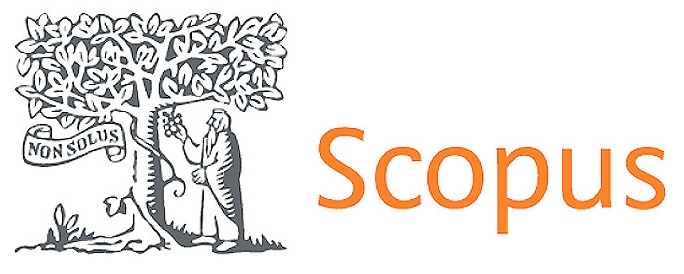Research on the effect model of immersive design in interactive advertising
DOI:
https://doi.org/10.56294/sctconf20251499Keywords:
Immersive Design, Interactive Advertising, Ad Effectiveness, Momentum Search-Driven Intelligent ResNet Architecture (MS-IRA), Virtual Reality (VR)Abstract
Introduction: The impact of immersive design in interactive advertising focuses on how visuals in Virtual Reality (VR) and interactive elements influence user engagement. With the growing adoption of immersive technologies, advertisers seek innovative ways to enhance ad performance and optimize user interaction. A high grade of Deep Learning (DL) was used towards the enhancement and prediction of advertisement (ad) performances yet the limitations include insufficient consideration of dynamic user behavior, challenges in analyzing complex multi-modal ad content, and difficulties in generalizing findings across diverse ad formats and user demographics.
Objective: The research aims to develop a model that analyzes and predicts the impact of immersive design elements in VR interactive advertising on user engagement. The goal is to leverage innovative DL approaches to focalizing advertising efficiency and improving results of interactions with users.
Method: A novel Momentum Search-Driven Intelligent ResNet Architecture (MS-IRA) is proposed, combining an enhanced ResNet model with momentum-based optimization techniques. The dataset comprises engagement measurements, including clicks, time spent, and conversion rates throughout multiple types of ads, as well as interactive and visual ads. Through enhanced persistent associations, the IRA technique improves the feature extraction, and preprocessing enabling it possible to recognize complicated trends in immersive VR ads. Furthermore, by adjusting parameters, MS accelerates up training, assuring faster convergence and improved modeling correctness.
Result: The suggested MS-IRA approach accurately facilitates the optimization of immersive advertising designs and improves the interactive advertising efficiency and user interaction results by improving the convergence and model accuracy (AUC with 0.98) in predicting user engagement and ad effectiveness.
Conclusion: By leveraging DL techniques, the research offers valuable insights into immersive design strategies, contributing to the evolution of interactive advertising and user-centered engagement approaches.
References
[1] Su L, Ye C, Huang Y. Does destination nostalgic advertising enhance tourists’ intentions to visit? The moderating role of destination type. Tourism Management. 2024 Feb 1;100:104810. https://doi.org/10.1016/j.tourman.2023.104810 DOI: https://doi.org/10.1016/j.tourman.2023.104810
[2] Efthymiou F, Hildebrand C, de Bellis E, Hampton WH. The power of AI-generated voices: How digital vocal tract length shapes product congruency and ad performance. Journal of Interactive Marketing. 2024 May;59(2):117-34.https://doi.org/10.1177/10949968231194905 DOI: https://doi.org/10.1177/10949968231194905
[3] Lv L, Huang M. Can personalized recommendations in charity advertising boost donation? The role of perceived autonomy. Journal of Advertising. 2024 Jan 1;53(1):36-53.https://doi.org/10.1080/00913367.2022.2109082 DOI: https://doi.org/10.1080/00913367.2022.2109082
[4] De Kerpel L, Van Kerckhove A, Tessitore T. Can you feel the advertisement tonight? The effect of ASMR cues in video advertising on purchase intention. International Journal of Advertising. 2024 May 18;43(4):716-45..https://doi.org/10.1080/02650487.2023.2262328 DOI: https://doi.org/10.1080/02650487.2023.2262328
[5] Jibril AB, Adzovie DE. Understanding the moderating role of E-WoM and traditional media advertisement toward fast-food joint selection: a uses and gratifications theory. Journal of Foodservice Business Research. 2024 Jan 2;27(1):1-25.https://doi.org/10.1080/15378020.2022.2070450 DOI: https://doi.org/10.1080/15378020.2022.2070450
[6] Ferraro C, Sands S, Zubcevic-Basic N, Campbell C. Diversity in the digital age: how consumers respond to diverse virtual influencers. International Journal of Advertising. 2024 Jan 2:1-23.https://doi.org/10.1080/02650487.2023.2300927 DOI: https://doi.org/10.1080/02650487.2023.2300927
[7] Wider W, Jiang L, Lin J, Fauzi MA, Li J, Chan CK. Metaverse chronicles: a bibliometric analysis of its evolving landscape. International Journal of Human–Computer Interaction. 2024 Sep 1;40(17):4873-86.https://doi.org/10.1080/10447318.2023.2227825 DOI: https://doi.org/10.1080/10447318.2023.2227825
[8] Umamaheswari DD. Role of Artificial Intelligence in Marketing Strategies and Performance. Migration Letters. 2024;21(S4):1589-99. DOI:10.1002/mar.21737 DOI: https://doi.org/10.1002/mar.21737
[9] Levine N, Paulos MF. Bootstrapping bulk locality. Part I: Sum rules for AdS form factors. Journal of High Energy Physics. 2024 Jan;2024(1):1-51.https://doi.org/10.1007/JHEP01(2024)049 DOI: https://doi.org/10.1007/JHEP01(2024)049
[10] Sun Y, Chen J, Sundar SS. Chatbot ads with a human touch: A test of anthropomorphism, interactivity, and narrativity. Journal of Business Research. 2024 Feb 1;172:114403.https://doi.org/10.1016/j.jbusres.2023.114403 DOI: https://doi.org/10.1016/j.jbusres.2023.114403
[11] Almestarihi R, Ahmad AY, Frangieh R, Abu-AlSondos I, Nser K, Ziani A. Measuring the ROI of paid advertising campaigns in digital marketing and its effect on business profitability. Uncertain Supply Chain Management. 2024;12(2):1275-84. https://doi.org/10.5267/j.uscm.2023.11.009 DOI: https://doi.org/10.5267/j.uscm.2023.11.009
[12] Yin X, Li J, Si H, Wu P. Attention marketing in fragmented entertainment: How advertising embedding influences purchase decision in short-form video apps. Journal of Retailing and Consumer Services. 2024 Jan 1;76:103572.https://doi.org/10.1016/j.jretconser.2023.103572 DOI: https://doi.org/10.1016/j.jretconser.2023.103572
[13] Zhou X, Lou C, Huang X. Transcendent brand activism advertising: Explicating the roles of color and message framing in advertising effectiveness. Journal of Advertising. 2024 Mar 14;53(2):183-99. https://doi.org/10.1080/00913367.2023.2217866 DOI: https://doi.org/10.1080/00913367.2023.2217866
[14] Wang P, Jiang L, Yang J. The early impact of GDPR compliance on display advertising: The case of an ad publisher. Journal of Marketing Research. 2024 Feb;61(1):70-91.https://doi.org/10.1177/00222437231171848 DOI: https://doi.org/10.1177/00222437231171848
[15] Alsharif AH, Salleh NZ, Alrawad M, Lutfi A. Exploring global trends and future directions in advertising research: A focus on consumer behavior. Current Psychology. 2024 Feb;43(7):6193-216.https://doi.org/10.1007/s12144-023-04812-w DOI: https://doi.org/10.1007/s12144-023-04812-w
[16] Jain A. In-game advertising and brand purchase intentions: an SOR perspective. Global knowledge, memory and communication. 2024 Jan 9;73(1/2):24-44.https://doi.org/10.1108/GKMC-02-2022-0050 DOI: https://doi.org/10.1108/GKMC-02-2022-0050
[17] Lim WM, Gupta S, Aggarwal A, Paul J, Sadhna P. How do digital natives perceive and react toward online advertising? Implications for SMEs. Journal of Strategic Marketing. 2024 Nov 16;32(8):1071-105.https://doi.org/10.1080/0965254X.2021.1941204 DOI: https://doi.org/10.1080/0965254X.2021.1941204
[18] Noor U, Mansoor M, Shamim A. Customers create customers!–Assessing the role of perceived personalization, online advertising engagement and online users' modes in generating positive e-WOM. Asia-Pacific Journal of Business Administration. 2024 Feb 2;16(2):392-409.https://doi.org/10.1108/APJBA-11-2021-0569 DOI: https://doi.org/10.1108/APJBA-11-2021-0569
[19] https://www.kaggle.com/datasets/ziya07/immersive-ad-design-analysis-data
[20] Zheng Q, Ding Q. Exploration of consumer preference based on deep learning neural network model in the immersive marketing environment. Plos one. 2022 May 4;17(5):e0268007. https://doi.org/10.1371/journal.pone.0268007 M DOI: https://doi.org/10.1371/journal.pone.0268007
[21] Moreno-Armendáriz MA, Calvo H, Duchanoy CA, Lara-Cázares A, Ramos-Diaz E, Morales-Flores VL. Deep-learning-based adaptive advertising with augmented reality. Sensors. 2021 Dec 23;22(1):63. https://doi.org/10.3390/s22010063 DOI: https://doi.org/10.3390/s22010063
Downloads
Published
Issue
Section
License
Copyright (c) 2025 Shanshan Li , Juliana Aida binti Abu Bakar (Author)

This work is licensed under a Creative Commons Attribution 4.0 International License.
The article is distributed under the Creative Commons Attribution 4.0 License. Unless otherwise stated, associated published material is distributed under the same licence.



